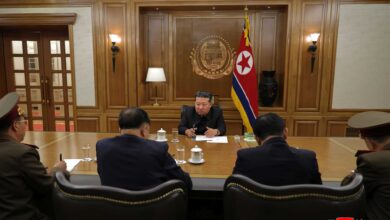By an order for the mobilization of the KPA all its units were immediately deployed over the vast expanse of the lowlands ranging from North Phyongan to South Hwanghae provinces.
People looked wide-eyed at the fully-armed service personnel who were moving in trucks or walking on foot day and night.
The US and south Korean armies, which had been keeping watchful eyes on the movement of the KPA units, were put on the alert.
Their fear dissipated only some days later, when they realized that those units were staying at cooperative farms, not in combat positions.
Then how did this happen?
On April 4 1997 Kim Jong Il said to the commanding officers: The Korean People’s Army is a revolutionary army for the people that shares weal and woe with them. To perform its duty with credit, it should pay due concern to assisting farmers in their work. This year its units should not go to the nearby farms as they did previously, but move as far as the lowlands and stay there for three or four months to help the farmers there, so that they will render a tangible contribution to producing cereals.
Then he went on to say:
The service personnel, by learning from the spirit and mettle displayed by the soldier-builders who performed heroic exploits in building the Anbyon Youth Power Station, shouting the slogan of loyalty Let us not see the blue sky over the country before carrying out the Supreme Commander’s orders, should work hard to help the farmers and thus contribute a large share to boosting the country’s output of cereals.

